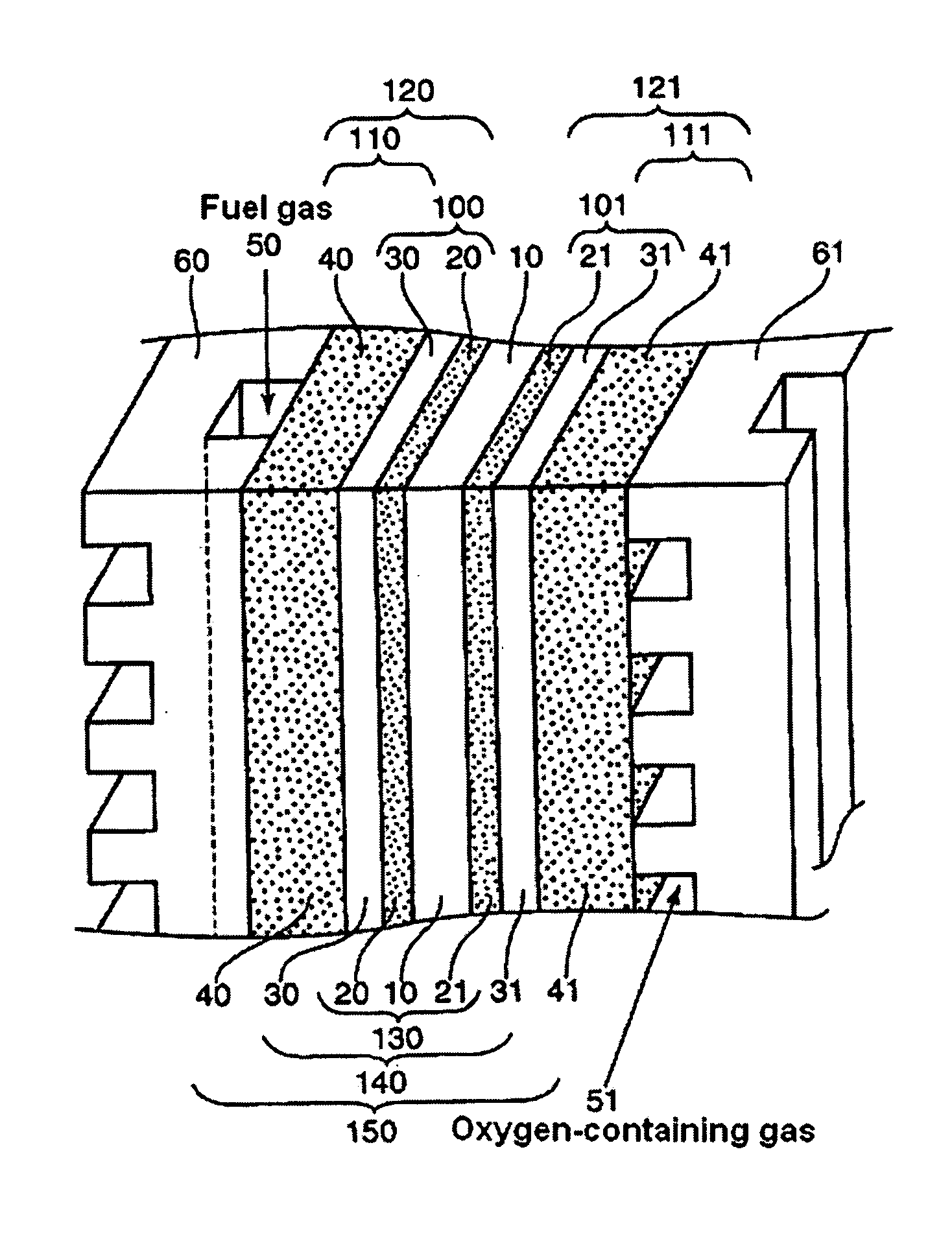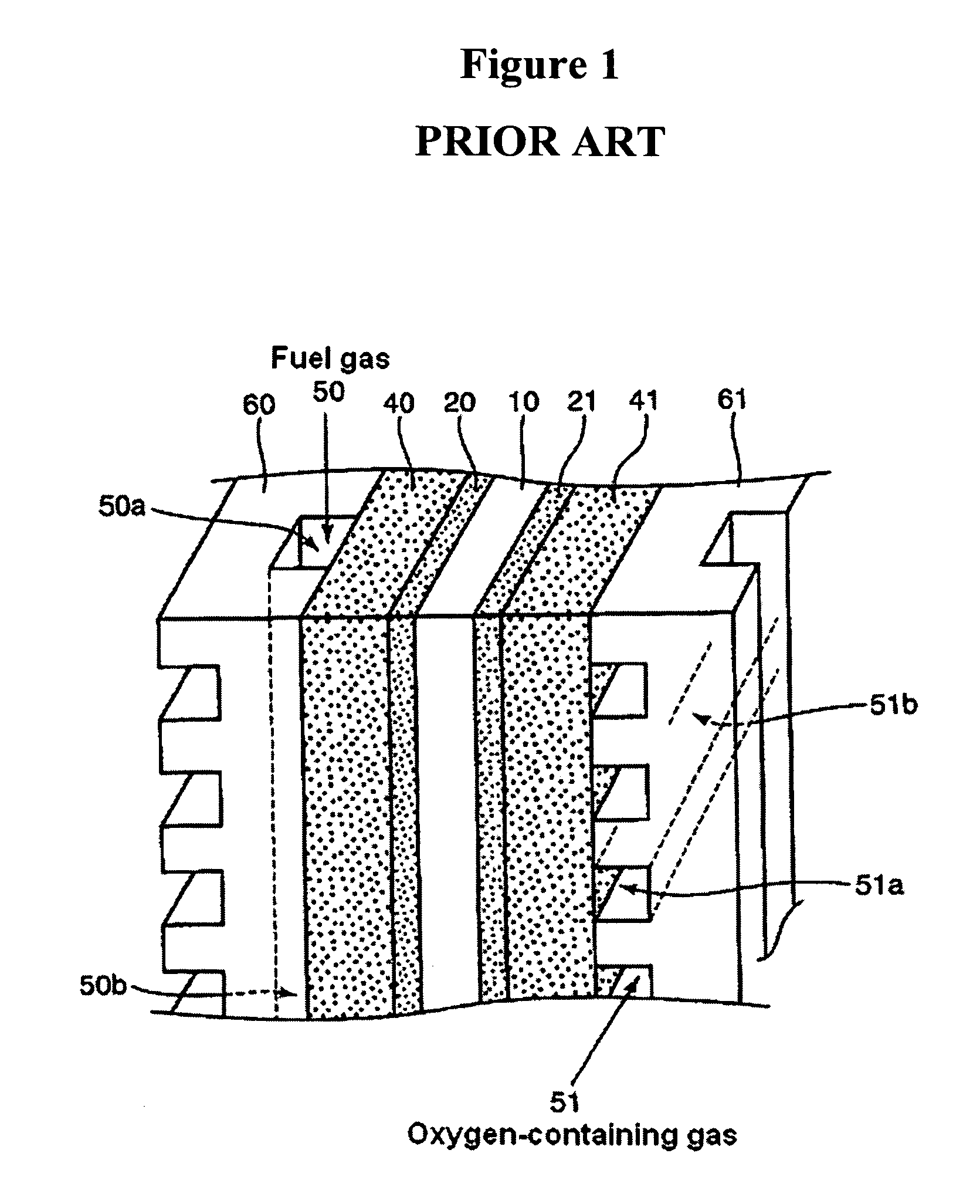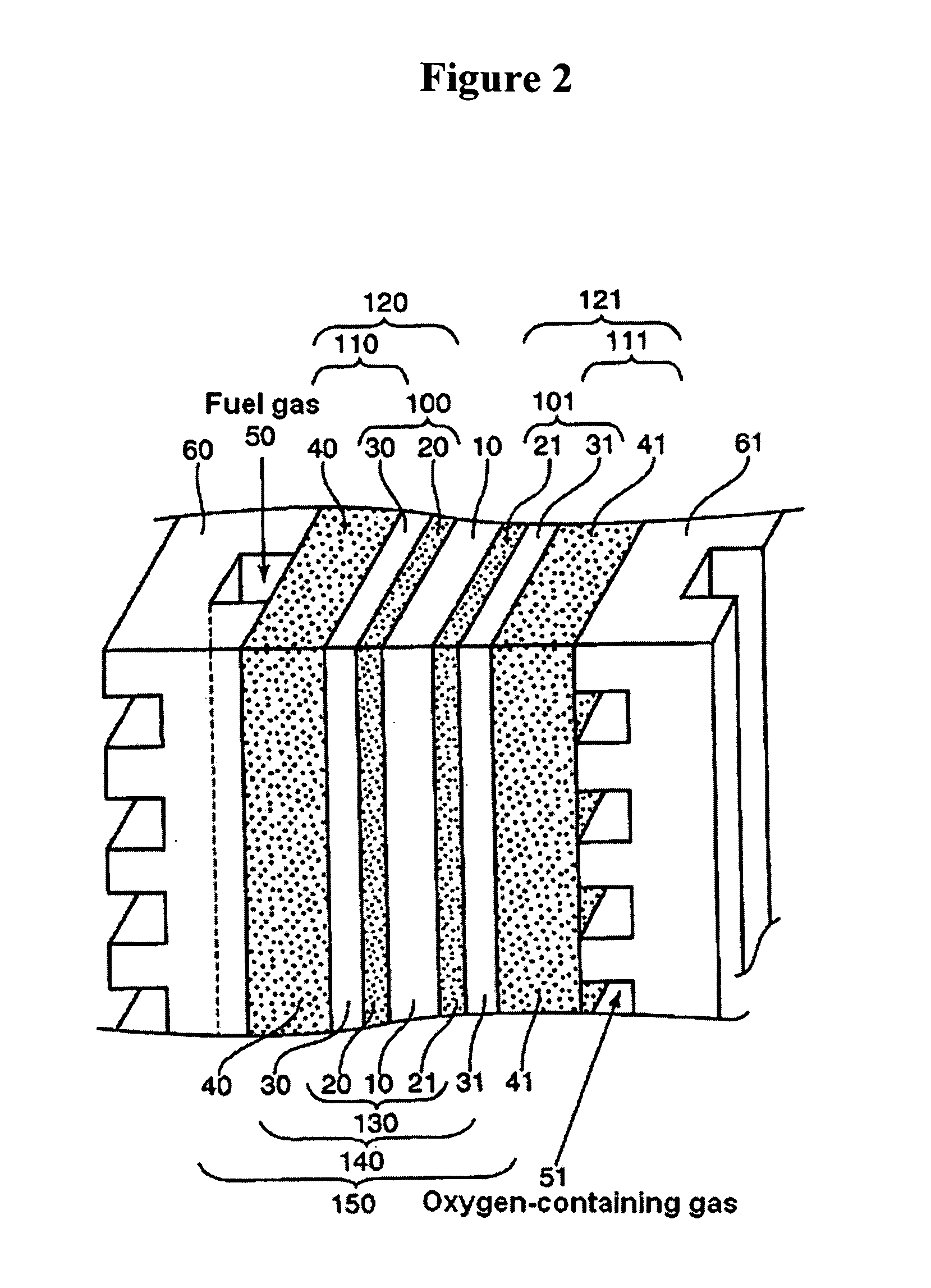Humidity adjusting film
a film and humidity adjustment technology, applied in the direction of non-metal conductors, cell components, conductors, etc., can solve the problems of difficult prevention of flooding and water tend to condense, and achieve the effects of preventing both dry-up and flooding of the fuel cell, high gas flow rate, and low air utilization ra
- Summary
- Abstract
- Description
- Claims
- Application Information
AI Technical Summary
Benefits of technology
Problems solved by technology
Method used
Image
Examples
working example 1
[0072] Acetylene black (a conductive carbonaceous powder) was placed gently in water so as to prevent scattering, and water was absorbed by the acetylene black while these ingredients were mixed using an agitator. Next, the acetylene black was agitated and dispersed using a homogenizer, thus producing an aqueous dispersion of acetylene black.
[0073] A specified amount of an aqueous dispersion of PTFE (commercial name: D1-E, manufactured by Daikin Industries Ltd.) was added to this aqueous dispersion of acetylene black, and these ingredients were gently stirred by means of an agitator, thus producing a uniform mixed dispersion. Next, the rotation of the agitator was increased, thus causing the co-precipitation of PTFE and acetylene black. The co-precipitate was filtered and collected, and was thinly spread in a stainless steel vat. This co-precipitate was then dried for one day and night at 120° C., thus producing a mixed powder of acetylene black (conductive carbonaceous powder) and...
example of manufacture
[0083] The single cell shown in FIG. 2 was manufactured using the humidity adjusting films of the working examples and comparative examples obtained as described above. Furthermore, these single cells were manufactured as follows.
Laminated type Gas Diffusion Layers 110 and 111
[0084] A carbon paper (commercial name T-GP-H060, manufactured by Toray) was immersed in a treatment solution adjusted to a PTFE concentration of 10% by diluting an aqueous dispersion of PTFE (commercial name: D1-E, manufactured by Daikin Industries Ltd.) with water, and was then pulled out of this solution. After the excess treatment solution on the surface of the carbon paper was wiped away, the carbon paper was dried for 1 hour at 150° C., and was then subjected to a heat treatment for 2 hours at 350° C., thus producing carbon fiber collector layers 40 and 41 (PTFE content: 18 mass %) subjected to a water-repellent treatment.
[0085] The humidity adjusting films 30 and 31 obtained in Working Examples 1 thro...
PUM
| Property | Measurement | Unit |
|---|---|---|
| thickness | aaaaa | aaaaa |
| thickness | aaaaa | aaaaa |
| thickness | aaaaa | aaaaa |
Abstract
Description
Claims
Application Information
 Login to View More
Login to View More - R&D
- Intellectual Property
- Life Sciences
- Materials
- Tech Scout
- Unparalleled Data Quality
- Higher Quality Content
- 60% Fewer Hallucinations
Browse by: Latest US Patents, China's latest patents, Technical Efficacy Thesaurus, Application Domain, Technology Topic, Popular Technical Reports.
© 2025 PatSnap. All rights reserved.Legal|Privacy policy|Modern Slavery Act Transparency Statement|Sitemap|About US| Contact US: help@patsnap.com



